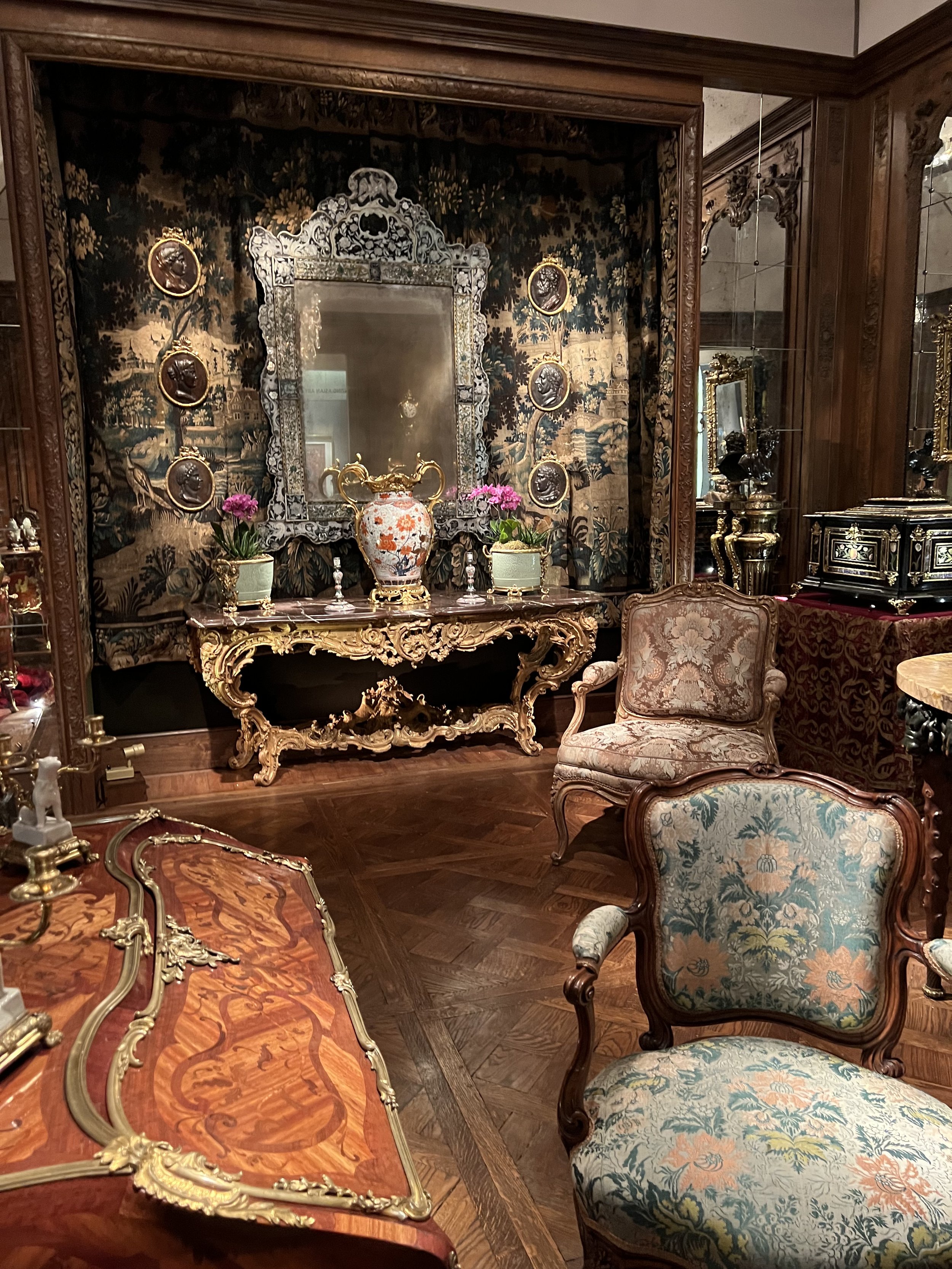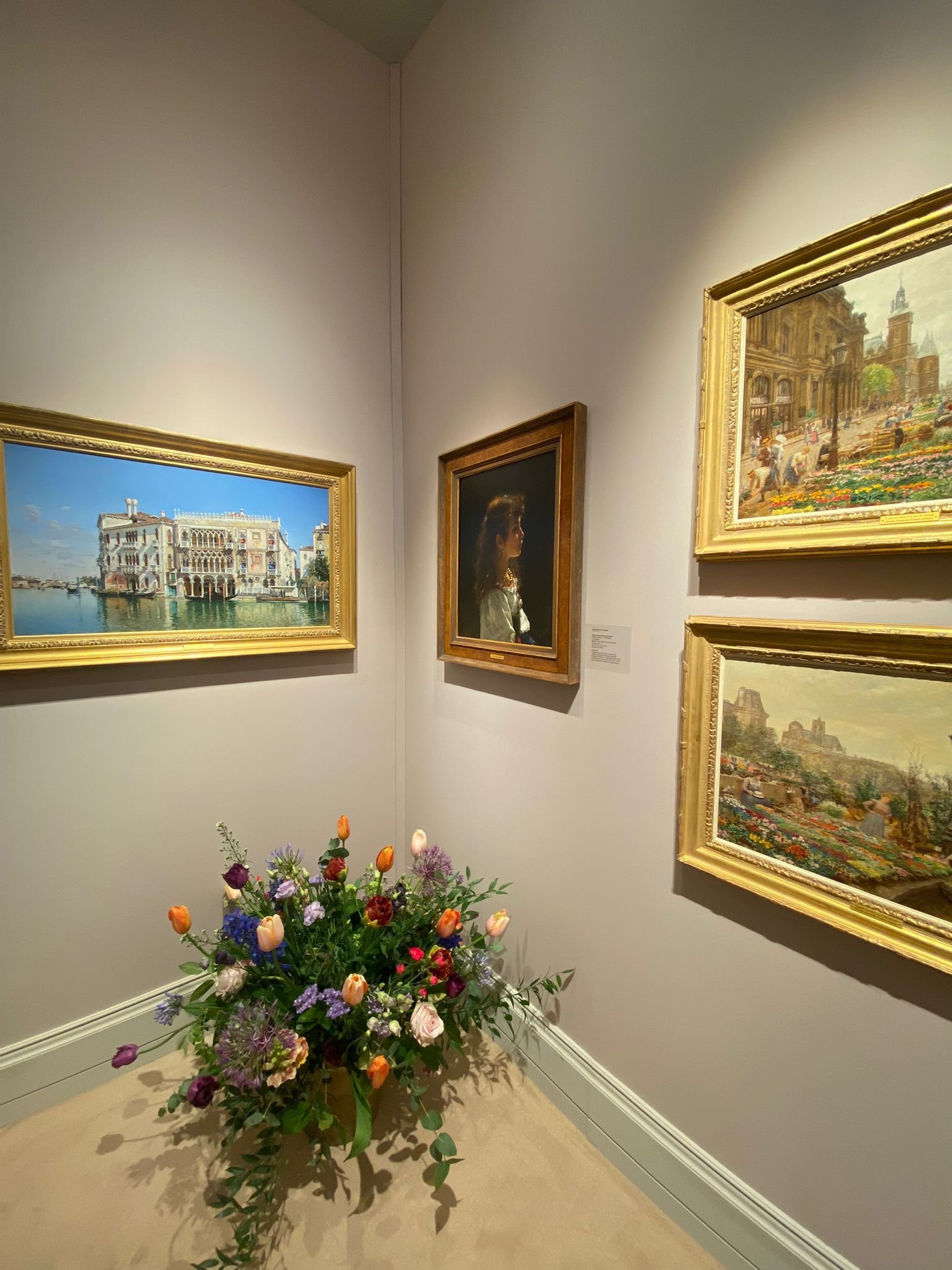Will the Sole Targeting of Older Generations Hurt TEFAF in the Future? Simply Put: Yes.
No one could deny that The European Fine Art Fair (TEFAF) in Maastricht is a fantastic art fair. The organisation even prides itself on being considered “the world’s premier fair for fine art, antiques and design.” [1] I am not here to argue the legitimacy of this statement. No, this writer is here to examine the type of collectors TEFAF tends to attract and whether the institution is pandering to an endangered client base.
TEFAF Entrance. Photo: Serena Yacoub.
Walking through the fair’s maze-like structure, one can genuinely understand why TEFAF is favoured amongst established collectors of the Western world. With a focus on primarily European aesthetics and elaborate displays - each one more intricate than the last - the fair is a go-to for many exhibitors. The fair is littered with booths with custom living room displays, fully outfitted from the floor to the ceiling, such as the Steinitz booth in the Antique section. By creating such a visceral, immersive and grand viewing experience, potential buyers can fully imagine how a specific object would look in their homes.
Steinitz at TEFAF. Photo: Serena Yacoub.
The fair’s rigorous vetting process only enhances this grandeur for its exhibitors. Given the prevalence of Antique, Old Master and Modern objects, it is only correct that this process includes proof of authenticity and provenance requirements. This process seemingly ensures the validity of the objects on display and is a major selling point to those attending.
The exhibitors' seriousness and willingness to jump through many hoops to participate in the fair, TEFAF provides an experience like no other and is the perfect place for patrons hoping to increase their collection.
With all this said, the question is: precisely who collects at TEFAF? Naturally, with the plethora of antiquities available, an older generation of collectors comes to mind. As the largest and most prominently placed section within the fair, it is clear that collectors with these specific interests are attracted and targeted. Still, this is a very niche group. Thus, it is vital to examine how the fair treats its regular clientele and how it approaches or ostracises younger collectors.
Photo: Serena Yacoub.
The inclusion of the Tribal Art section is, in today’s society, a bold move undoubtedly targeted towards older, perhaps less socially and politically aware collectors. Hidden away in the top left corner of the fair, so-called “tribal” objects are available for sale. The term itself is pretty antiquated; nowadays, most would rather avoid the term altogether and focus on the specific people the objects originate from. The presence of “tribal” art also brings to question the ethics of the matter in which the objects were obtained, a fact often overlooked by the older generation of collectors.
Another suspicious detail that leans towards the exclusion of younger collectors is the Showcase program. This program was intended to provide an opportunity for younger galleries to exhibit at their prestigious event. Despite the valiant attempt, it seems that the Showcase was perhaps only for show… These participating galleries just happened to be featured in the only enclosed space of the entire building… right next to a smelly raw seafood bar. There is no way to determine if this choice was deliberate, but having the only section of the fair with galleries younger than ten years old literally among the placid fish was an interesting move. Unfortunately, with this move, the Showcase section was criminally under-visited and under-acknowledged. Like myself, many visitors, I am sure, were more focused on holding their breath than the artworks on display.
Another minor yet similar detail that comes to mind is the randomly placed high-end jewellery section positioned among the antiques. Labelled as “La Haute Joaillerie” on the TEFAF map, the seven booths involved stand out. This was in part due to the contrasting objects for sale. But it was also due to the curatorial decision for the sets of booths to be so brightly lit that they appeared more like a shopping mall storefront rather than a high-end art fair booth. A glaringly obvious perpetrator of this would be Forms, who had the unfortunate luck to be directly across from Anna Hu Haute Joillerie. The Anna Hu booth was the only member in the jewellery section that took the venue seriously and curated a beautiful display with antique jewellery levitating in free-standing clear columns. Though every exhibitor’s goal is to sell, the jewellery section's blatant honesty, barring Anna Hu, can be considered gaudy. A fair-goer, therefore, can consider the booth selling private jets just a few rows down in the same vein.
Photo: Serena Yacoub.
All these overt statements and subtle hints conclude that TEFAF seeks to entertain an older generation of art collectors and does not care to move with the times - that is, giving equal opportunities to alternative luxury objects and up-and-coming businesses. Although one cannot deny that the older generation has been the backbone of the art market for decades, their influence decreases year after year. The younger collectors are more cautious with their money in terms of what kind of art they are willing to spend their considerable funds on, and iffy provenance and ethical dilemmas do not seem to appeal. But it is only natural that the young replace the old, as is the circle of life. Resultantly, to continue its prestigious reputation and commercial success in the future, TEFAF must evolve.
As I said at the beginning of this article, there is no doubt that TEFAF is an amazing art fair. It avoids the outright spectacle other fairs tend to fall victim to and focuses on the objects on display being of the highest calibre for the most serious collectors. All this critic is saying is that TEFAF needs to recognise its declining popularity among younger generations and take the necessary steps to engage and retain a broader and newer audience.
Footnotes:
“General Info,” TEFAF Art Fair Maastricht, accessed March 20, 2023, https://www.tefaf.com/fairs/tefaf-maastricht.
Serena Yacoub
Features Co-Editor, MADE IN BED





